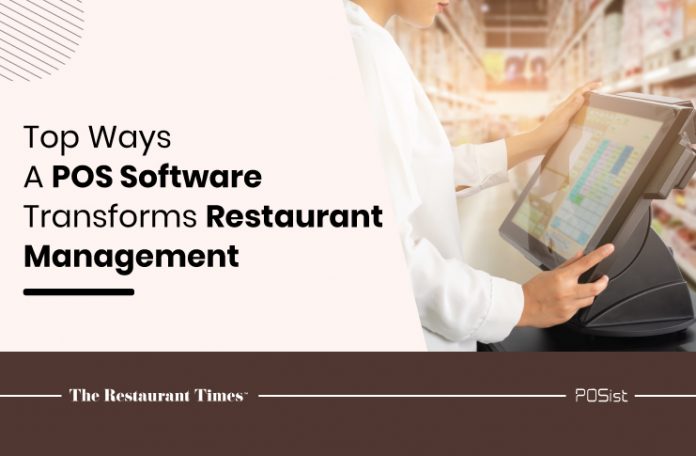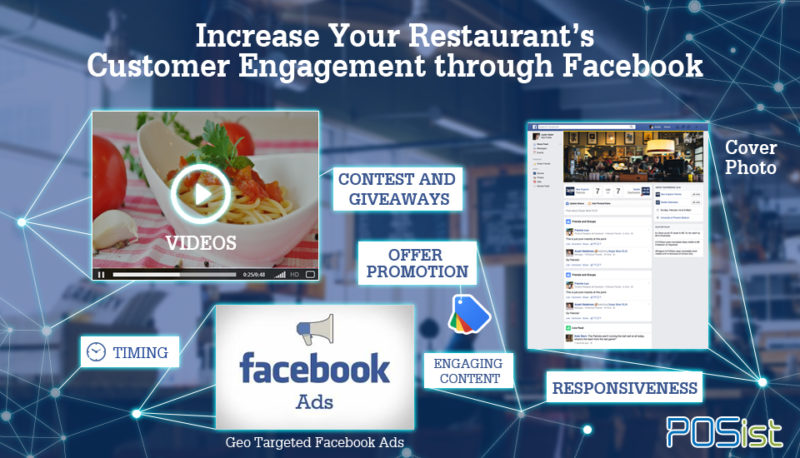Since the 1970s, the US restaurant industry has witnessed healthy growth. The immense developments in the F&B industry are a major contributor to the booming US economy. The country has more than 1 million operating restaurant locations as of 2021, employing 15.6 million workers. Surviving in such an intensely competitive environment demands competency and streamlined operations. Here is when Point of Sale or POS software comes into the picture. Harnessing the POS software, restaurateurs have enhanced their restaurant management systems to stay pro-active in the competition.
No wonder, starting and running a restaurant is a daunting task since there are so many things to keep in check, to run a successful business. One of the most important reasons you will deploy a POS system in your restaurant is for efficient management of labor and food costs. Besides, there are many other ways in which POS software can spur growth in your restaurant business. This article aims to highlight how POS software can transform your restaurant management system by automating it.
8 Ways POS Software Remodels The Restaurant Management System
With the advancing technology, more and more restaurants are now ‘going-tech’ to enhance their operations and boost revenues. From QSRs and fine-dine restaurants to cloud kitchens, POS software is now powering every form of restaurant. These are the multiple ways POS software brings about a change in restaurant operations.
1. Simplify Ordering & Billing Procedures
POS software handles the tumultuous task of managing orders from various online and offline channels in a restaurant. The multitude of orders received from online ordering platforms, food aggregators, dine-in services, and the restaurant’s own website needs to be managed efficiently to avoid discrepancies. You don’t want to disappoint your customers by shuffling their orders, and honestly, in a high-stress environment like a restaurant kitchen, such errors are prone if not common. Hence, a POS software prRovides you with a centralized server where you can collect all these orders and serve/deliver them one by one, without getting overwhelmed.
Further, integrating with a POS system simplifies the ordering, billing, and payment procedures, not just for the restaurants but for the customers as well. With POS software, restaurants can manifest an easy-to-use user-interface via their online ordering platform, website, or integrating with food delivery applications that enable customers to order and pay bills without any hassles.

2. Manage Inventory
Inventory management is the most important aspect of running a restaurant business. Mismanagement of inventory incurs extra food costs that can be detrimental to your business. With the help of POS software, you can access the daily, weekly, monthly, and even yearly sales reports of your restaurant. Not just this, you can even know quantitative info like what ingredient is used in how much quantities to prepare a specific recipe.
All this crucial data lets you analyze and optimize the food costs of your restaurant. Moreover, you can know what recipe is contributing zilch to the revenue and strike it off the menu. In addition to this, the POS software alerts whenever you need restocking so that you can build and manage the purchase orders accordingly.
3. Manage CRM Data
Customers serve as the backbone of your restaurant. You need to build healthy connections with your patrons in order to serve them well. A POS software collects all the customer data centrally and gives you access to it. There are a lot of ways to leverage this CRM data to boost the profitability of your restaurant. For instance, you can figure out the customers who visit your restaurant most frequently and create special offers for them based on their preferences. It is a good practice to cater to and retain customers and keep them coming back.
4. Take Feedback
Making your customers feel valued and gaining insights from their feedback is something that is essential to improve your business. A POS software lets you seek feedback from your customers using emails, comment cards, or feedback forms regarding multiple aspects like food, service, ambience, etc. The first-hand insights collected from your customers enables you to analyze the loopholes in your restaurant’s service and work on them to further enhance your services.
5. Introduce Efficient Mobility
Mobility of operations is essential to manage the restaurant from wherever you are. Imagine having a crisis in your restaurant but you can’t solve it since you are not physically present and do not have access to any data. A POS software solves all such problems and lets you access your restaurant data remotely from anywhere in the world on any internet-enabled device.
The orders received through a mobile POS goes directly to the kitchen without having to carry them manually. For instance, while carrying an order manually to the kitchen, the waiter may be interrupted by another customer for some query resulting in delays in serving other customers with their orders. However, POS software simplifies the game – you can serve your customers more efficiently by reducing the table-turnaround time, and give them exact recipe descriptions, and making everything quicker.

6. Facilitate Efficient Marketing
A POS software serves as an extremely effective marketing tool as well, as it stores all the mission-critical customer data centrally. You know your customers’ preferences, their birthdays, anniversaries, and other special occasions, all of which may be helpful in marketing strategizing. Furthermore, with all this data, you can dish out special offers or discounts to your customers on their special days and boost the incoming orders with the help of personalized marketing.
7. Integrate With Third-Party Applications
There are many other elements that a restaurant needs to take care of other than preparing food, like ordering, payments, delivery, etc. A restaurant POS software that is able to integrate with third-party applications can manage it all, in one swift go.
By integrating with food delivery applications like Seamless, GrubHub, DoorDash, etc., POS software opens new avenues for accepting orders. These third-party food delivery applications market the restaurant efficiently and also provide a delivery staff to facilitate easy deliveries. However, do note that you can avoid the commission of these applications – which is around 30% – if your POS lets you integrate with other online ordering platforms that demand relatively lesser or no commissions.
Furthermore, at some point in your business, you might need monetary software integrations. Integrating with multiple e-wallets like Google wallet, ApplePay, etc. simplifies the payment procedures for the customers, and additionally makes it contactless (a basic requirement post-COVID-19).
8. Prevent Thefts
Thefts are clearly not good for any business. In the restaurant business, there can be many potential cases of theft. For instance, thefts at the cash register, during deliveries, printing double KOTs, etc. However, a POS software keeps a tab of the amount in the cash register at the start and the end of every working day, along with the number of sales made each day. This feature enables you to keep an eye on the exact amount of cash coming in and out of your outlet. Furthermore, it also sends alerts to the manager if there is a likelihood of thefts in the restaurant.
A POS software collectively takes care of everything and manages each task more efficiently when compared to manual labor. Not automating restaurant operations and relying on manual labor might result in developmental delays in your business. Thus, it is highly recommended to switch to POS software to gain an edge over your competitors in the intense US restaurant industry.

















